




• With Face ID,Apple has launched a grand experiment in a form of biometric security previously untested at this scale.






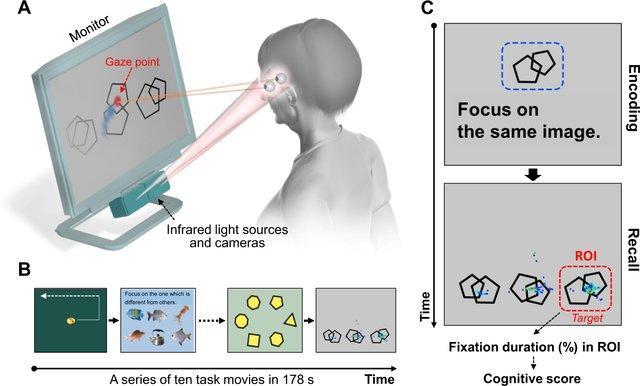















Augmented Reality based Piano tutorAPPS align a virtual piano to your real keyboard, and then uses MIDI passthrough to teach songs by displaying notes falling in sequence toward the keys.







Modular augmented reality for self-guided machine troubleshooting and repair with remote support.






As seen in North Carolina, Flytrex delivers Starbucks Coffee by drone to your door



Lab samples delivery use case by Swiss company





The use of computers to “simulate” human intelligence
• Defining “intelligence” is an open problem
• “Common Sense Reasoning” still an open problem
The excessive hype lead to two AI Winters - Cut in funding, industry disillusionment, and practitioners avoid the field
• AI Winter 1 - Mid 1970’s
• AI Winter 2 - Early 1990’s



A subset of AI concerned with machines modifying/learning behaviors based on experience (inputs) -



Where did the first wave fail?
Severe underestimations of the complexity of
• Common sense reasoning
• Natural language understanding
• Mathematical logic was only useful in theory but not computationally practical

What did we learn?

• Extremely narrow problems, with limited or no need for common sense reasoning
• Many practical applications did work in very narrow verticals
• Expert systems, scheduling in manufacturing, travel bookings, etc.
• Game players – chess, checkers, etc

1980’s to early 1990’s -- AI Winter II: early-1990’s
Where did the second wave fail?
• Common sense reasoning still proved to be too challenging
• “Natural Language Understanding” continued to disappoint
• Severe under-estimation of the complexity of “Machine Vision”
• Probabilistic reasoning did not scale

What did we learn?

• The problem was worse: it seems like we needed a ”complete understanding” of the world to do any of these tasks
• Reasoning turns out to be more complicated, multi-faceted, a very hard, but critical problem to solve









• Major hype in the 1980’s – AI was going to solve all problems and change the world
• U.S. was afraid of Japan AI program – 5th Gen. Systems
• We are all going to be useless
• Jobless
• Brainless
• China 2030 AI is the new Japanese 5th Gen


Not because we developed new/better ML algorithms… But because we had a lot more data
A subset of AI concerned with machines learning/modifying behaviors based on experience (inputs)
Early success: Arthur Samuel’s Checkers player at IBM (1955-1959)
• Major insights on learning as an optimization problem

Significance of Samuel’s ML Proof?
• Samuels’s Checker player learned to play by playing games

• It “learned” by adjusting a scoring function that allowed it to prefer some moves over others –started beating Samuel himself!
• Became a “better” checkers player with each game it played


The Significance of Samuel’s Checkers Player results

So What?
Why is this a great test?
• Started beating Samuel consistently – became ”better” than its author
• Fed it all championship games in simulation – the machine started playing at championship levels


o This is fundamentally an incremental, experience based, optimization technique
o This type of success was repeated in many “data analysis” tasks:
o Learning to diagnose illness, to predict marketing preferences, x-sell and up-sell recommendations



1: A typical mid-game checkers position.


Published in IBM Journal of Research and Development 1967
Some Studies in Machine Learning Using the Game of Checkers
A. Samuel


ClassicalAI (waves 1 &2)
PredictiveAI (waves 2+ & 3)
Expert systems, rule-based systems, scheduling, reasoning about uncertainty, Machine Learning
general problem solvers, heuristic search, knowledge representation, planning, causal reasoning, machine vision, natural language understanding, Pattern Recognition
GenerativeAI (wave 3)
Empirical/Data-Driven methods - data
mining/data science, Deep Learning
Optimization-driven approaches,
The generation of “content” (text, images, voice, video, etc.) from a textual or multimodal prompt
predictive analytics, decision trees, Bayesian Models, and many classification and regression methods, Linear & Integer programming, intensive search, advanced satisfiability search and optimization

Analyzes and learns from data to create (“generate”) something new - data, images, sounds, or other types of information.
Recent buzz driven by the simplicity of new user interfaces for creating high-quality text, graphics, and videos within seconds (e.g. ChatGPT)


Artificial Intelligence
Programs with the ability to simulate human intelligence
Machine Learning
Programs with the ability to learn without being explicitly programmed
Generative Models
Programs with the ability to learn how to generate new data that is similar to a given set of training data








• Resurgence on Neural Networks in 2010 – Deep Learning
• Not much new, just lots of computation and lots of data
• Works very effectively in “non-declarative” knowledge
• Breakthroughs on learning “procedural knowledge” where we don’t know how humans do it – Jeff Hinton in 2012 – image recognition in 22K categories over 15 million images (85% accuracy)

• Object Recognition
• Speech Recognition
• High-dimensional regression/decision making


(from 1940’s to F. Rosenblatt1958)




adapted from Primer Talk by

Northeastern University - Generative AI Workshop: From the Classroom to the Economy - April 2023




2023




2023

adapted from Primer Talk by Prof.



100’s of Billions of parameters
Billions of parameters
Millions of nodes

Stack many layers (depth) to get deep networks

Increase the number of inputs
Northeastern University - Generative AI Workshop: From the Classroom to the Economy - April 2023





the Economy - April 2023
(Dall-E interpretation)

Reduce the problem domain to one where “complete knowledge” is possible by narrowing scope
Complete knowledge is impossible unless your focus is extremely narrow






How about “Grand Challenge problems” like Machine Vision in Commerce?
• Look for simplifications - recognizing objects is too hard?
• Avoid image analysis completely too hard to figure out items in a basket?



Any relation to how humans see?









Benefits Buy-In fromAcross Organization 2
Reasonable ROI and timelines agreed with team, management, legal, risk, and FINANCE buy in

Latest inAI can be very expensive…
Depending on benefit expensive may be OK… Optimize later…


Data is Essential
Outcomes Events Context Must capture most organizations struggle with the basics of making data work as an asset
The “AI-haves” understand this and they have systems to:
○ Capture every bit of data + context
○ The ability to leverage this data through Machine Learning (ML) to automate the determination of the right action in the proper context

Human Intervention is Essential
Guidance Corrections Context Must capture
Capitalize on and capture every human intervention to guide AI

What about the human-in-the-loop?
Human intervention is the most valuable asset for Google, OpenAI,Amazon, Tesla, and all companies that makeAI work

"Data" was the #1 most used word in the letter - 27 times. JPMorgan has identified 300 use cases forAI that are already in practice at Chase.
Jamie Dimon's annual Shareholder Letter for 2023 "Artificial intelligence (AI) and the raw material that feeds it, data, will be critical to our company’s future success … We already have more than 300AI use cases in production today for risk, prospecting, marketing, customer experience and fraud prevention, andAI runs throughout our payments processing and money movement systems across the globe. "
—Jamie Dimon, CEO of JPMorgan Chase

April 2024 - LikenedAI to “Steam Engine” and talked about 400 use cases in the bank. Data as a theme continued…



Fairness and bias in algorithms can have big consequences
Some decisions are much more consequential (than e.g. targeting ads)
Algorithms have little or no reasoning capability (or even common sense) – all they know is data (w/ almost no context)

Advanced tech and data enable potentially deep intrusion on privacy & civil rights
Modeling complex decisions & consequences is a hard problem
GenAI can be Unstable and in unpredictable ways
In new situations, random actions come out


Successful AI is totally dependent on ML/Data Science, hence need good training data: Data remains a huge challenge for most organizations
Good training data is extremely expensive to get
… reliable labelling even more expensive
Just collecting and managing raw data is a challenge for most organizations

… data is growing exponentially with digitization, cloud, and IOT
Data manipulation is very difficult, few understand unstructured data


3
CaptureAll Data at High Granularity
Capture all Events, Outcomes, and “Context” at as fine a granularity as possible
Focus on Structured as well as Unstructured data


Majority of Data in any organization is Unstructured (90% per Gartner)

But most businesses are not equipped to effectively manage data as an asset
we
New economy of Interactions is rich with unstructured data in fact, 90% of Data in any organization is UNSTRUCTURED Without proper Data, AI cannot work: ML needs high quality and granular training data




Human-centric approaches to solve real problems in real contexts with a human in the loop: Effective Human ⇔ AI cooperation.

Human intervention is a must


Human intervention is a great opportunity for knowledge capture & ML
Thesis: Taking an applied approach is the best way to solve problems in science and in practice:
● Leverage data in a way that amplifies the values and benefits of machine learning
● create mechanisms for machines and humans to learn together
Result: creating actions, decisions, & results that neither machine nor humans can achieve alone.



Much speculation about pure AI (AGI) or much human intervention?
• Strong evidence that human editorial review is applied
• Some questions are answered by humans
• Generally, this is a good sign in our opinion
• Does raise issues about “intelligence” and “reasoning”
• This is a best practice – we call it
ExperientialAI – many do it:
• Google MLR
• Amazon recommendations
• Many intervention-based relevance feedback



https://mindmatters.ai/2023/01/found-chatgpts-humans-in-the-loop/

CaptureALLdata from EVERYhuman intervention
when, why, desired outcome, and context for interventions with clear permission and disclosure

In most organization this data is never Captured Leakage of IPinto Data Exhaust – a true waste of the most valuable resource…





Generation of text, images, etc. from a textual or multimodal prompt
• Generating text is based on Large Language Models (LLMs)
• Other models generate images or videos

These models are referred to as “Stochastic Parrots”
because they do not understand what they say


GenerativeAI for Text:
● ChatGPT(OpenAI)
● Bard (Google)
● LlaMa (Meta)
GenerativeAI for Images:
● DALL-E (OpenAI)
● Stable Diffusion (StabilityAI)
● Midjourney (idem)
GenerativeAI for Short Videos:
● Midjourney (with a parameter)
● Runway

GenerativeAI for Code:
● OpenAI’s Codex
● Microsoft CoPilot (Codex on Github)
● Cognition’s Devin (s/w engineer)
GenerativeAI for Voice & Music
● Aiva.ai
● Endel

● Lyricstudio.net
Plus other objects:
● DNA, Protein folding
● Chemistry, Physics, Molecular Design




Chat interface running atop GPT-3 (Then GPT-3.5, later GPT4)

- Generative Pre-trained Transformer model – utilizes transformer
○ GPT3 trained on a corpus of about 1TB of Web text data (with adjustments to reduces biases)
○ GPT-3 is a neural net with 175 billion parameters – expensive to train
❑ Uses generative unsupervised training
❑ Works by predicting next token in a sequence – sequences can be very long…



Most capabilities of ChatGPT not new – around since 2020 in GPT-3

Auto-complete on steroids – with prediction and “concept graph” & human feedback/editing

How much does it cost to train GPT-3 on the 1TB of Curated Data?
How much did it cost to curate the right 1TB of data?






$15Trillion
● AI will add $20 trillion to the global economy by 2030

by 2030
● Of this, 1/3 is likely to come from increased productivity and 2/3 trillion is likely to come from consumption-side effects.
McKinsey & Co, 2023

Source: https://www.mckinsey.com/capabilities/mckinsey-digital/our-insights/the-economic-potential-of-generative-ai-the-next-productivity-frontier#business-value


• Knowledge worker tasks
• Several estimates, ranging from 15% to 80% of the work likely to experience significant acceleration
• But total automation not in reach
What is the size of the “knowledge economy”?

Between 19.6% and 30.4% of global employment (ILO, 2023)
Source: U.N. Report: “Automation hits the knowledge worker: ChatGPTand the future of work”
https://sdgs.un.org/sites/default/files/2023-05/B59%20-%20Berg%20-%20Automation%20hits%20the%20knowledge%20worker%20Chat GPT%20and%20the%20future%20of%20work.pdf



• Human in the Loop is Essential
• Need to check the output
• Need to modify and edit
• Need to approve


WillAI replace my job? NO - but a Human usingAI will … if you are not usingAI

Financial Services
Manufacturers
Film & Media
Medical Industry
Architectural Firms
Gaming Companies
Monitor transactions in the context of individual history to build better fraud detection systems.
Design and interpret contracts, analyze case law and evidence, and suggest arguments.
Combine data from cameras, X-ray and other metrics to identify defects and root causes more accurately and economically.
Produce content more economically and translate it into other languages with the actors' own voices.
Identify promising drug candidates more efficiently, suggest rare disease diagnoses, answer general questions.

Design and adapt prototypes faster.
Use generative AI to design game content and levels.



ALarge Language Model - has no knowledge or understanding of what it “learned”
○ Billions to trillions of weights
○ They serve as a glorified “auto-complete” capability

It is amazing & astounding what these stochastic parrots can do!
In our new digital knowledge economy!
How does it work with trillions of parameters?
Ask me and we can explain it in 10 slides!






the Classroom to the Economy - April 2023
(Dall-E interpretation)


Ayear in GenAI - what happened from 2023-2024

Demos of amusing and fascinating capabilities
How does it help the business?

Loose claims of impact, acceleration and ROI
Can you quantify the benefits?


Is learning code an easier LLM task than Natural Language?
- Microsoft acquires GitHub in 2018 for $7.5B - Gets access to code by millions of developers using the open source platform
- Train LLM’s to produce code (e.g. Python) instead of language (e.g. English)
❑ Use documentation and notes
❑ Label programs by purpose, and other metadata

Is this easier task than English? ? Does this replace programmers?
How much would it increase the productivity of a programmer? ?
Helpful to non-programmers (no-code applications)?


• KhanAcademy: set of online tools to help educate students worldwide.
• Offers thousands of math, science, and social studies lessons for students of all ages.
• In addition, the organization produces short lessons through videos and blogs, and recently it began offering Khanmigo.
• Khanmigo is a newAI assistant powered by GPT-4.
• Khanmigo can do a lot of things for students, such as guiding and encouraging them, asking questions, and preparing them for tests.
• Khanmigo is designed to be a friendly chatbot that helps students with their classwork.
• Support for students and teachers
• It does not give students answers directly, but instead guides them in the learning process.
• Khanmigo can also support teachers by helping them make lesson plans, complete administrative tasks, and create lesson books, among other things.


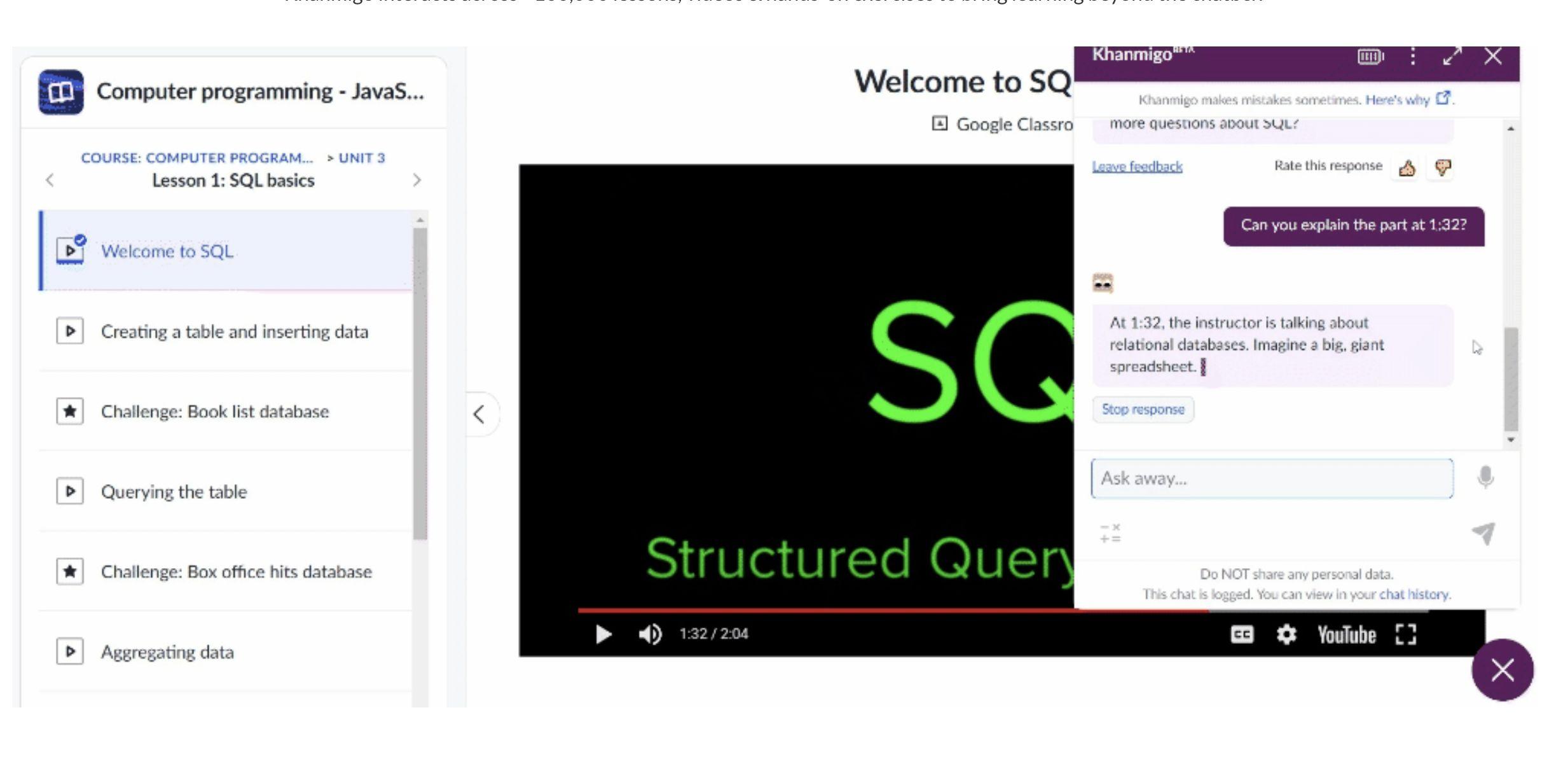




Consider Virgin Cruises Marketing Campaign…

An Interesting tool for marketing?






Personalization at scale:
● Using generative voice: match user speech to JLo’s speech pattern and style based on training.
● Using generative video: match movement, pose, gestures to JLo’s avatar
users can craft custom video invites from JLo herself…
● Implemented by a startup: DeepLocal - before the chatGPT hype






But reality gets much more complicated (e.g., fake news)








• Fraud
Impersonation
Social Engineering
Cybercrime • Human-likeness (without transparency)




- June 2024


- An opportunity - Astrategic advantage - We will come back to ResponsibleAI a little later


ResponsibleAI by Design and RiskAssessment Process
Risk assessment processes for unintended biases, and built-in RESPONSIBLEAI with embedded ethics team

In most organization RAI is an after-thought Risks can create debilitating Reputational Damage – and serious economic costs and liability…


Robustness and mitigating errors
RAG (RetrievalAugmented Generation)

Advanced RAG - pre- and post-retrieval processing
Modular RAG - Hybrid Search, Recursive
Retrieval and Querying, Step-back approach, Sub-queries, Hypothetical Document Embeddings
Graph RAG - graph/hierarchy leverage in prompting







Larger LLM’s are not necessarily better

Better Together (SLM + Knowledge Graphs)
Private LLMs on the rise - Narrow specialization of SLMs


After pushing the thesis: “the larger the LLM, the better” - tech giants started admitting SLMs (Small Language Models) since LLMs created unsustainable costs










• BloombergGPT, a 50-billion parameter large language model, purpose-built from scratch for finance [March 30, 2023]
• BloombergGPT represents the first step in the development and application of this new technology for the financial industry.

• Assists Bloomberg in improving existing financial NLP tasks, such as sentiment analysis, named entity recognition, news classification, and question answering, summarization, among others.
• BloombergGPT: What? So What? Now what?
[BloombergGPTARXIV: https://arxiv.org/abs/2303.17564 ]


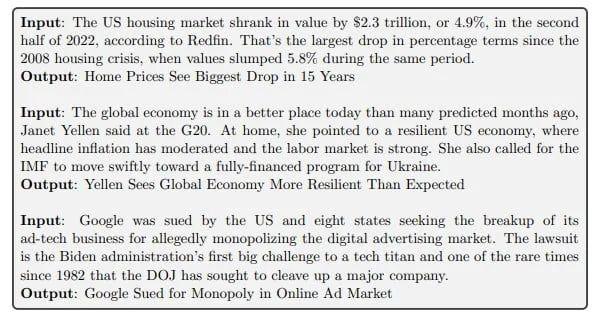





Example: Bloomberg


• SO WHAT
• This domain-specific language model allows Bloomberg to develop many new types of applications and achieve much higher performance than with custom models for each application - all with a faster time to market.



● Why a 50-billion parameter large language model?
○ Because team had a “compute” budget of $3.5M
● What is the significance BloombergGPT for Bloomberg?
○ Addressed some really important high-business value problems.
○ The approach generalized to many problems: sentiment analysis, named entity recognition, news classification, and question answering, summarization, among others.
● BloombergGPT: What? So What? Now what?

[BloombergGPTARXIV: https://arxiv.org/abs/2303.17564 ]


Xfinance LLM 13B Outperforms BloombergGPT
• Perform both unsupervised fine-tuning and instruction fine-tuning on the LLaMA13B model (Stockastic.AI)
LLaMA 13B model

Fine-tune with Self-supervised using finance articles

Fine-tune with instruction examples Based on Question-Answer pairs

• Fine-tuning on a GCPcluster of 8A100 80GB GPUs over 24 hours at a cost of $1,000
• Outperforms BloombergGPTon a range of financial applications
25% of the size of BloombergGPT

1000x cheaper?
Much more?
More Robust, easier to maintain

Benefits Buy-In fromAcross Organization
Reasonable ROI and timelines agreed with team, management, legal, risk, and FINANCE buy in

Remember: in most cases Larger LLM is not necessarily better Larger LLM is not only more expensive – but much more likely to be unstable and difficult to maintain…


Ease of Use and Integration withApps
Deployment Simplification - e.g.Amazon Bedrock
Multi-modal interfaces: GPT4o

Co-pilot like integration: Office, browser, Windows, Search
Agreat example of integrated GenAI tools?



• Private LLM trained on fully-owned images (safe, owned, controlled DATA)
• Users indemnified against IP rights issues
• Integrated into a platform that reaches many millions of users
• Natural and intuitive integrations



Generate





Incremental and Continuous progress
Gradual, but CONTINUOUS improvement over time

Remember: Resist being at head of the pack, but use the technology in regular work
Trying to catch up when others figure out howAI is useful is too difficult –and the gap will become rapidly a prohibitive chasm…


Student-teacher LLM models

Synthetic data
Research to understand what happens inside the “black box”


https://newatlas.com/technology/gpt4-autonomously-hack-zero-day-security-flaws/?utm_source=flipboard&utm_content=other
GPT-4 autonomously hacks zero-day security flaws with 53% success rate
By Joe Salas
June 08, 2024

GPT-4 was able to exploit 87% of critical-severity CVEs (Common Vulnerabilities & Exposures) on its own.
HPTSAhas shown to be 550% more efficient than a single LLM in exploiting vulnerabilities: 8 of 15 zero-day vulnerabilities. Solo LLM was able to hack only 3/15 vulnerabilities.


Claimed to “simulate” a software engineer - via planning and using specialized LLMs
Can Devin get paid to do programming on Upwork?
DEVINAI planner
Clones LLama 7B models (specialists)
Claims are being disputed via further studies!


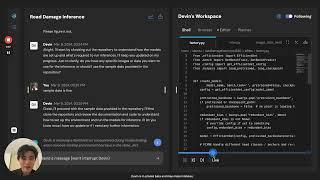



https://arxiv.org/pdf/2303.18223.pdf








Stay lucid about what LLMs can and cannot do.
➢ LLMs do not “hallucinate” – they make errors
➢ LLMs are not “thinking” – they mimic conversation

➢ LLMs do not “have” opinions or character – they exhibit / reflect those
➢ LLMs do not “intend” outcomes – they do produce outcomes
➢ LLMs do not intend manipulation and harm but they do “cause” manipulation, misinformation, and harm

✗ reputational cost
✗ regulatory issues
LAW ✗ systems designed against us
SOCIETY
customer trust
competitive edge
systems designed for us MARKET
MARKET
shaping policy







Ethical Risk Assessment
Legitimacy & Competence
Audit Validation & Testing Monitoring Tools

Accountability & Responsibility Contestability & Auditability Minimizing Harm Transparency
&
Interpretability & Explanation Limiting environmental impacts








How Verizon Wireless partnered with experts at the Institute for Experiential AI to integrate Responsible AI into its innovation roadmap












Need and priority identification
- Action guiding roadmap



Value Identification
- Define & operationalize organizational values
Tool+Guideline Dev.
- To mitigate risks and identify opportunities
RAI Training
- Leadership/workforce training to upskill for defined RAI roles


Workflow Integration
- Integrating tools and guidelines from Phase 2 within all relevant teams (e.g. product design or data management)

Organizational Change
- Equipping teams to work together across the organization to solve RAI challenges as they appear




Are you capturing the right data?
Are you closing the loop with ML/Data Science?
Do you know where to use PredictiveAI vs GenAI?

What applications ofAI give you highest competitive advantage?
How do you acquire, train, and retain the right talent?


1. Levels of Training:
a. AI Literacy &Awareness
b. AI business usage
c. AI technical usage
d. AITechnical in-house Expertise
e. AI for Executives and Leaders
f. AI Policies, Regulations, and Law

2. At Northeastern University’s Institute for EAI we offer programs in:
a. All the above areas (a-f)
b. For b, c, d: we believe best approach is Experiential Education: Learn while applying the new technology to your work problems
3. What do you need to attract the right talent?
4. What do you need to retain the right talent?


Nurture Talent and buildAI Culture
Talent and CULTURE are critical, employee & executive education are a must

Culture eats Strategy for Breakfast
Establish a Data andAI organization with ongoing upskilling and strong talent management


Should we do anything onAI/GenAI now or wait and see?
What happens if we just observe and learn?

Do we use public LLMs or should the team build private LLMs?
Can we leverage Open Source/Freeware to start?
Why is everyone saying larger models are better?



What is your strategy for:
Narrowing the problem scope as much as possible
Business Case: with team, management, and FINANCE buy in and agreement to reasonable ROI expectations over time 2
Collect ALL data surrounding events, outcomes and context

Capture ALL data from EVERY human intervention: when, why, desired outcome, and context with clear permission and disclosure
Risk assessment processes for unintended biases, and built-in RESPONSIBLEAI with embedded ethics team
Incremental and gradual, but CONTINUOUS improvement over time


1. GenerativeAI offers a means for accelerating work, but not fully automating it
2. GenerativeAI can help reduce robotic, repetitive, and manually intensive work

3. It can be a game changer for efficiency, accuracy and CX (customer experience)
4. National regulation is coming first in the EU and China, then the US
5. Barriers, complexity and costs (if done rationally) of GenAI are coming down – this tech is available to competitors and fintechs


1. AI is an enterprise imperative – challenging to make work – But is a big factor in competitiveness in the knowledge economy
2. HOWEVER:
No Data ⇒ No workingAI
Capture your IP: events, outcomes, context
Human intervention a must continuous correction of algorithmic errors

● Getting the data/context story right is the key enabler for business insights &AI
● There is a rational approach to getting to data assets - and capturing valuable human interactions ⇒ ExperientialAI


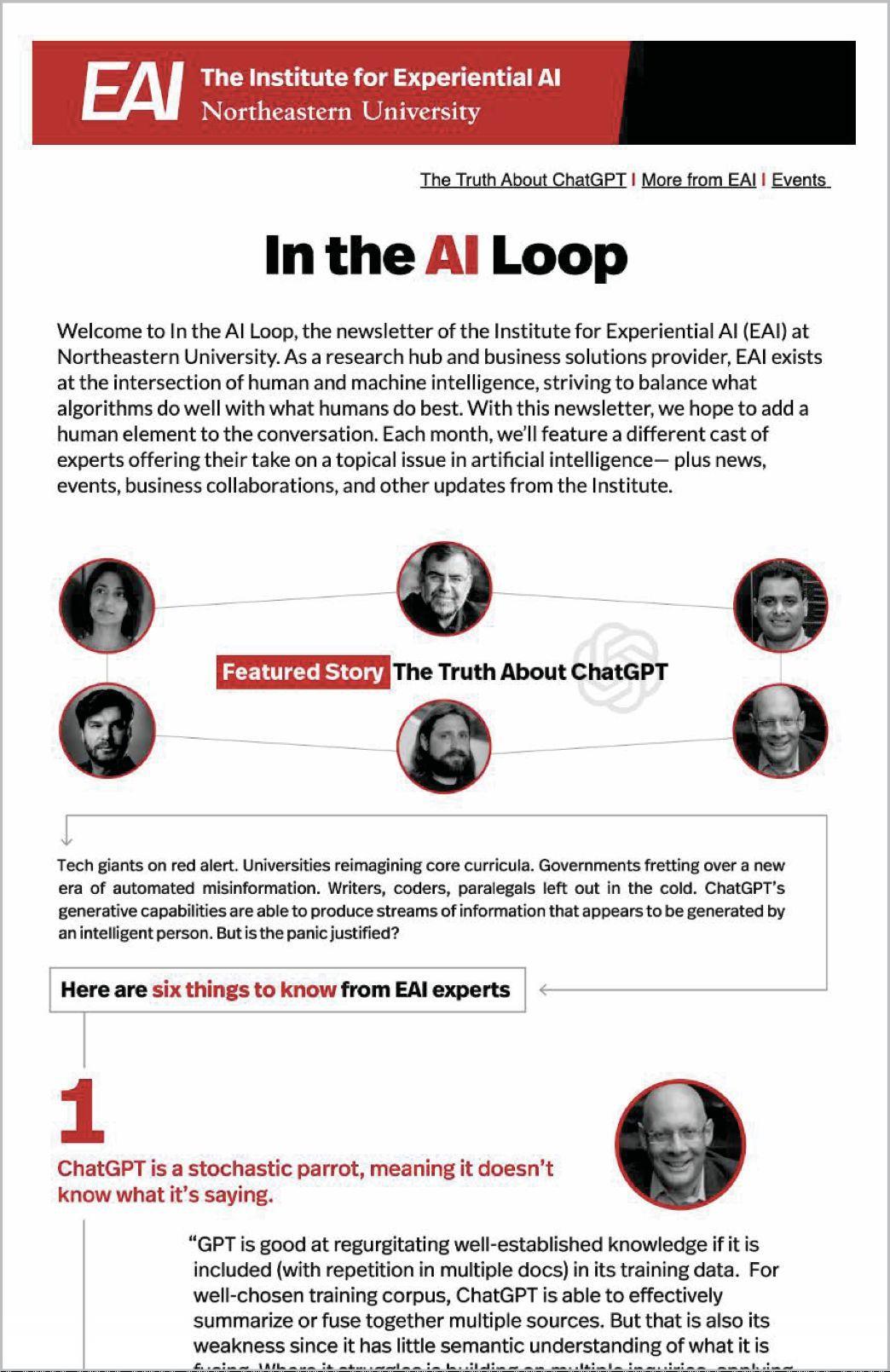












Usama Fayyad, Executive Director, Institute for Experiential AI (EAI) at Northeastern University
Professor of the Practice, Khoury College for Computer Sciences, Northeastern University

Goal: Make AI and Data usable, useful, manageable - democratize the responsible use of AI across fields


Education
● Ph.D. Computer Science & Engineering (CSE) in AI/Machine Learning
● MSE (CSE), M.Sc. (Mathematics)
● BSE (EE), BSE (Computer Engin)
Academic achievements
● Fellow: Association for the Advancement of Artificial Intelligence (AAAI) and Association for Computing Machinery (ACM)
● Over 100 technical articles on data mining, data science, AI/ML, and databases.
● Over 20 patents, 2 technical books.











● First in industry: Chief Data Officer at Yahoo!
● First Global Chief Data Officer & Group Managing Director at Barclays Bank, London
● Chaired/started major conferences in Data Science, Data Mining, AI
● Founding Editor-in-Chief on two key journals in Data Science
